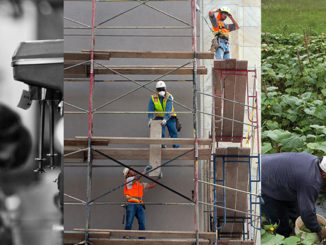
By Jeffrey S. Passel and D’Vera Cohn, Pew Research Center
An estimated 11.3 million unauthorized immigrants lived in the U.S. in 2014, according to a new preliminary Pew Research Center estimate based on government data. This population has remained essentially stable for five years after nearly two decades of changes.
 The recent overall stability contrasts with past trends. The unauthorized immigrant population had risen rapidly during the 1990s and early 2000s, from an estimated 3.5 million in 1990 to a peak of 12.2 million in 2007. It then dropped sharply during the Great Recession of 2007-09, mainly because of a decrease in immigration from Mexico.
The recent overall stability contrasts with past trends. The unauthorized immigrant population had risen rapidly during the 1990s and early 2000s, from an estimated 3.5 million in 1990 to a peak of 12.2 million in 2007. It then dropped sharply during the Great Recession of 2007-09, mainly because of a decrease in immigration from Mexico.
The overall estimate has fluctuated little in recent years because the number of new unauthorized immigrants is roughly equal to the number who are deported, leave the U.S. on their own, convert to legal status, or (in a small number of cases) die, according to the Pew Research analysis. The new unauthorized immigrant total includes people who cross the border illegally as well as those who arrive with legal visas and remain in the U.S. after their visas expire.
Pew Research estimates that, since 2009, there has been an average of about 350,000 new unauthorized immigrants each year. Of these, about 100,000 are Mexican, a much smaller share than in the past. In the years leading up to the Great Recession, Mexicans represented about half of new unauthorized immigrants.
Due to the slowdown in new illegal immigration since the Great Recession, unauthorized immigrants are less likely than those in the past to be recent arrivals. The share of unauthorized-immigrant adults who have lived in the U.S. for a decade or more has nearly doubled, from 35% in 2000 to 62% in 2012, according to a Pew Research estimate released last year. Only 15% in 2012 had lived in the U.S. for less than five years, compared with 38% in 2000.
Because they are more likely to be long-term residents, unauthorized immigrants also are increasingly likely to live with children born in the U.S. Pew Research Center estimates that in 2012, 4 million unauthorized-immigrant adults, or 38%, lived with their U.S.-born children, either minors or adults. In 2000, 2.1 million unauthorized-immigrant adults, or 30%, lived with their U.S.-born children. (The total number of unauthorized immigrants with adult or minor children born in the U.S. may well be higher, as these figures do not count those whose children live elsewhere.)
The Pew Research estimates are based on data from the U.S. Census Bureau’s Current Population Survey and American Community Survey, using the widely accepted “residual method.”
The unauthorized immigrant population estimate includes people who have been granted temporary relief from deportation under various federal programs. Last year, President Barack Obama took executive action to expand an existing program and establish a new one that would offer work permits and deportation relief to an estimated 5 million unauthorized immigrants. The actions – which are on hold because of a lawsuit by 26 states – would be open to unauthorized immigrants who were brought to the U.S. illegally as children, or who are parents with a child who is a U.S. citizen or legal permanent resident, as long as they meet certain requirements.
Jeffrey S. Passel is a senior demographer at Pew Research Center.
D’Vera Cohn is a senior writer/editor focusing on social and demographic trends at Pew Research Center.



